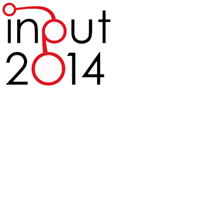From a Smart City to a Smart Up-Country. The New City-Territory of L’Aquila
Abstract
Ever since it was founded in the Middle Ages, the city of L’Aquila has been known as a City-territory. This was because it was established through an original unification process involving approximately 70 minor centres, which transferred a number of their inhabitants into the new City, in an act that we today would call Territorial Cohesion, thereby forming a city that was inextricably linked to its territory. While it is now undergoing radical transformation with dedicated resources, it is within this context that the issue of Smart Cities has emerged, which has, however, focused its work solely on established urban systems and historic centres. By reflecting on L’Aquila’s role as a City-territory, which falls within the disadvantaged inland areas, and by preparing the Project in the Junction 2 - Abruzzo Territories of the Ministry of Infrastructure and Transport and the Abruzzo Region, we are able to extend the objectives of the Smart-City to the L’Aquila City-territory and in particular to the Seismic Crater, a pertinent example of an “inland area” (or rather “Up-Country”) that today has been increasingly deprived of its identified resources. With a view to the development of inland areas based on the “smart” concept and involving planned integration between the Macro-region, the Territory Project and the Urban Planning Project, this paper supports the need for immediate intervention in the L’Aquila City-territory, and more broadly speaking for the entire territorial settlement system that is a feature of inland areas in Abruzzo. Nowadays, it is not possible to prepare a development project for inland areas without providing them with suitable access to connectivity and other more general networks.Downloads
References
Carabba, P., Di Giovanni, B., Iannetta, M., Padovani, L.M. (2013), “Città ed ambiente agricolo: iniziative di sostenibilità verso una Smart City”, in E. Ronchi et al. (eds,), Un Green new deal per l’Italia, Edizioni Ambiente, Milan.
CRESA (2011), “I caratteri di fondo dell’area del sisma”, Congiuntura Economica Abruzzese, Suppl. 1, L’Abruzzo e il cratere sismico: economie a confronto prima e dopo il terremoto, CRESA, L’Aquila.
Choay, F. (1992), L'orizzonte del posturbano, D'Alfonso E. (ed.), Officina, Roma.
DAE (2013), Digital Agenda for Europe, EU, http://ec.europa.eu/digital-agenda/digital-agenda-europe.
DAI (2014), La strategia italiana per l’agenda digitale, Presidenza del Consiglio dei Ministri – Agenzia per l’Italia digitale, http://www.agid.gov.it/sites/default/files/documenti_indirizzo/strategia_italiana_agenda_digitale.pdf.
Di Ludovico, D. (2013), New Landscape and Comprehensive Urban Project in the Reconstruction Process. The case of L'Aquila (Italy), SABIEDRIBA, INTEGRACIJA, IZGLITIBA, vol. III, 99-108.
Di Ludovico, D., Properzi, P. (2012), “Progetti urbani e Progetti urbanistici nel governo dei paesaggi post-urbani”, Proceedings of XV Conferenza Nazionale SIU - Società Italiana degli Urbanisti - L'Urbanistica che cambia. Rischi e valori, Pescara 10-11 May 2012, Planum, The Journal of Urbanism, 25(2), www.planum.net.
Donadieu, P. (2013), Campagne urbane, una nuova proposta di paesaggio della città, Mininni M. (ed.), Donzelli, Roma.
EU (2007), Opinion of the European Economic and Social Committee on European metropolitan areas: socio-economic implications for Europe's future, European Economic and Social Committee, Brussels, 12-13.
EU (2011), Territorial Agenda of the European Union 2020, towards and Inclusive, Smart and Sustainable Europe of Diverse Regions, http://www.eu-territorial-agenda.eu/Reference%20Documents/Final%20TA2020.pdf.
Fabbro, S. (2007), Il progetto della regione europea. Regole e strategie del territorio di fronte all'European Spatial Planning, Franco Angeli, Milan.
Innerarity, D. (2013), The Democracy of Knowledge, Bloomsbury academic, New York-London.
Morandi, M. (2009), “Progetto urbano e progetto urbanistico: riferimenti e considerazioni”, in Macramè, 3, 85-88.
Properzi, P. (2009), “20 Città a confronto - L'Aquila”, in E. Piroddi, A. Cappuccitti (ed.), Il Nuovo Manuale di Urbanistica, vol. 3, Gruppo Mancosu Editore, Rome, 280-282.
Van Etten, J. (2013), Climate-smart territories — An interview with Jacob van Etten, in http://www.bioversityinternational.org/news/detail/climate-smart-territories-an-interview-with-jacob-van-etten/.

Copyright (c) 2014 Tema. Journal of Land Use, Mobility and Environment

This work is licensed under a Creative Commons Attribution 4.0 International License.
Authors who publish in this journal agree to the following:
1. Authors retain the rights to their work and give in to the journal the right of first publication of the work simultaneously licensed under a Creative Commons License - Attribution that allows others to share the work indicating the authorship and the initial publication in this journal.
2. Authors can adhere to other agreements of non-exclusive license for the distribution of the published version of the work (ex. To deposit it in an institutional repository or to publish it in a monography), provided to indicate that the document was first published in this journal.
3. Authors can distribute their work online (ex. In institutional repositories or in their website) prior to and during the submission process, as it can lead to productive exchanges and it can increase the quotations of the published work (See The Effect of Open Access)
